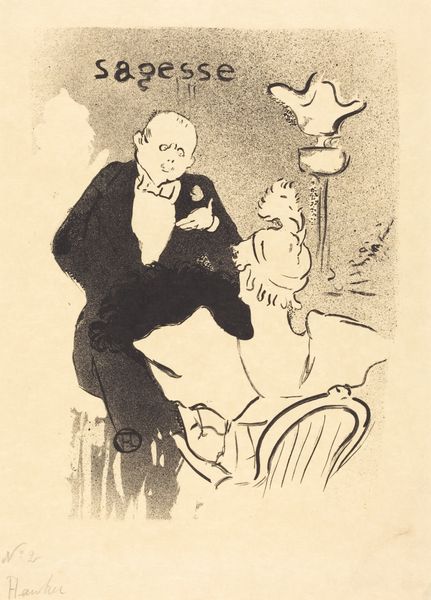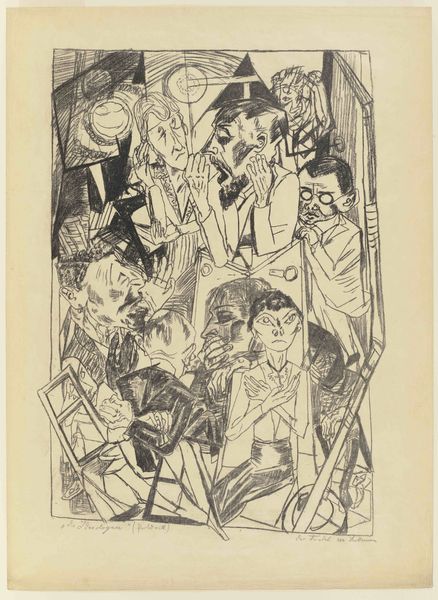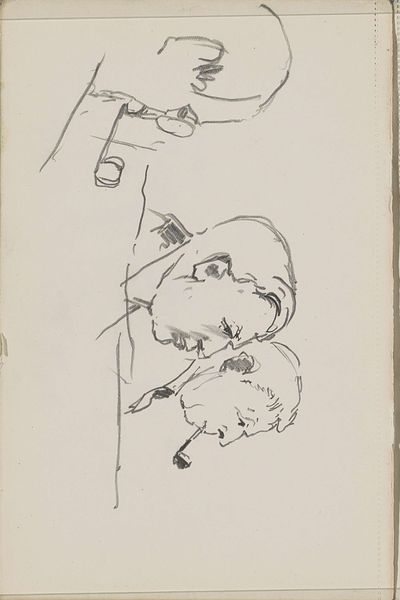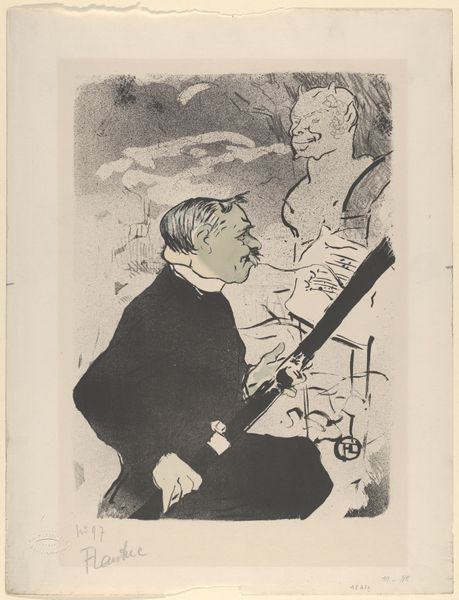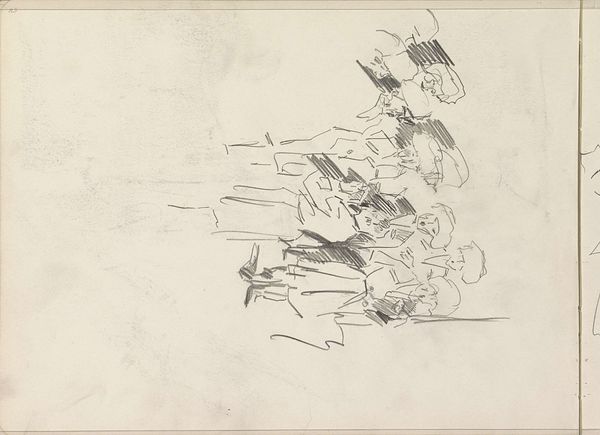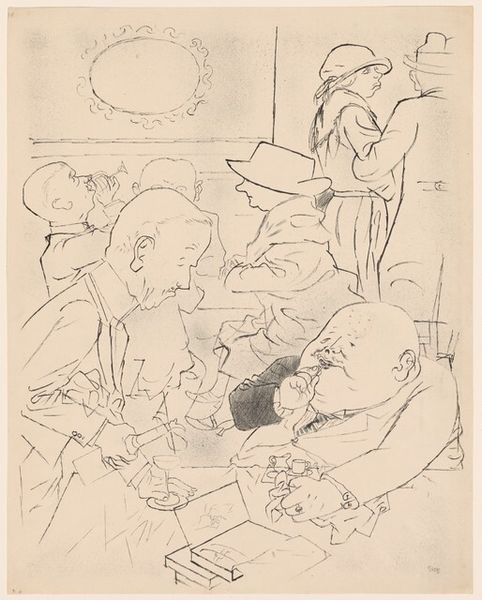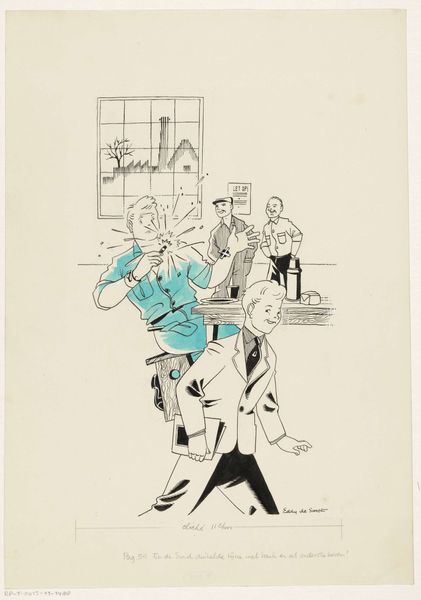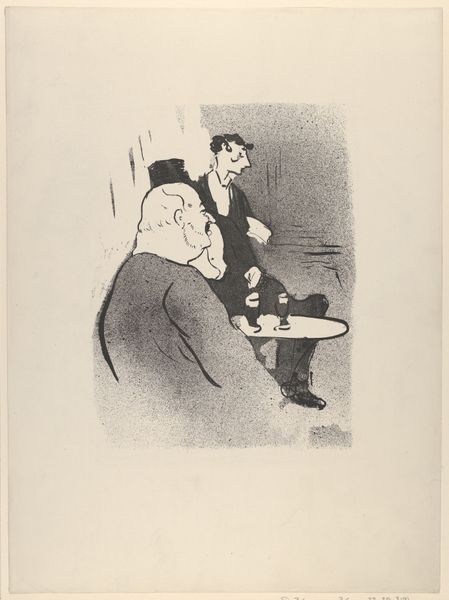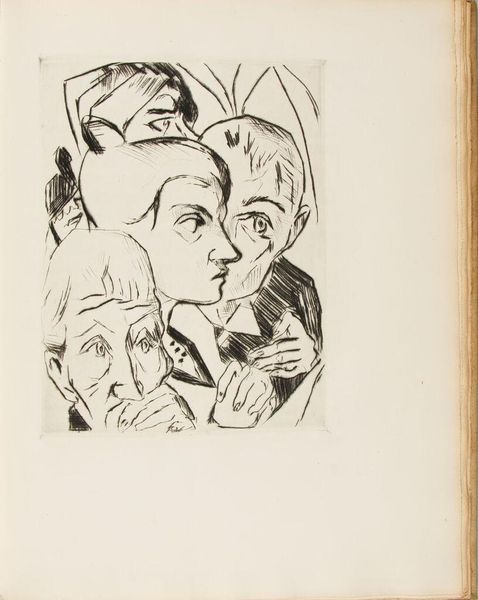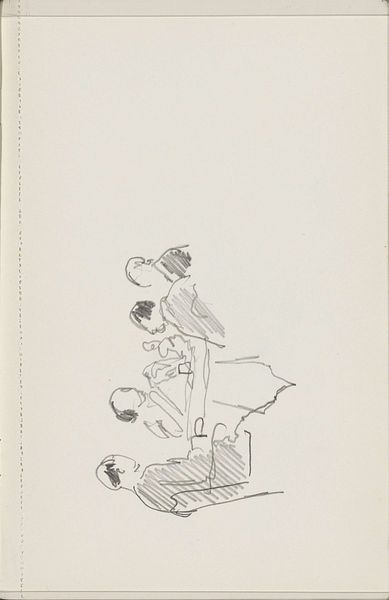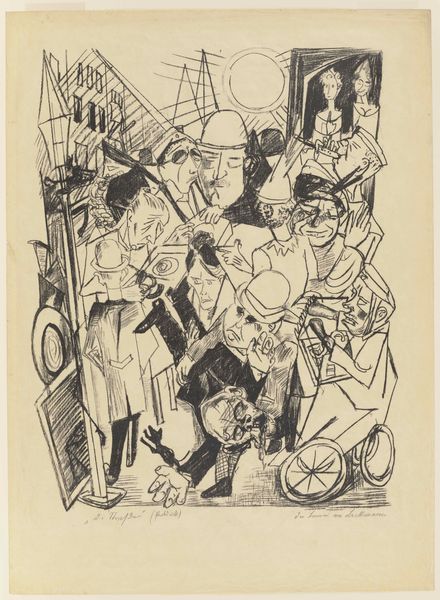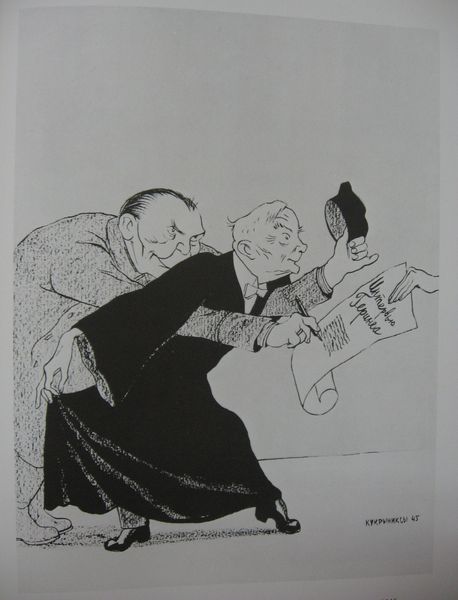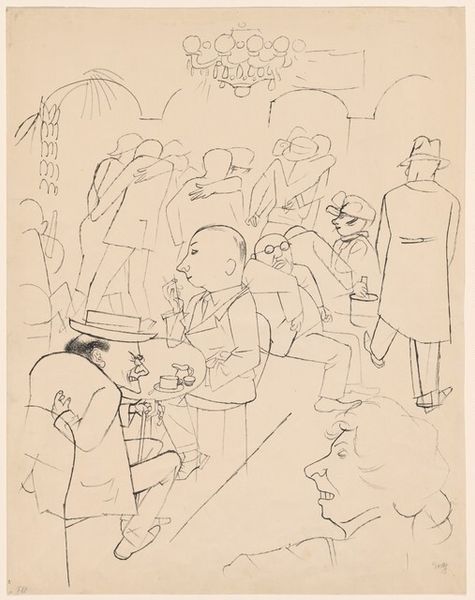
drawing, ink, pen
#
portrait
#
drawing
#
imaginative character sketch
#
quirky illustration
#
childish illustration
#
pen sketch
#
caricature
#
cartoon sketch
#
personal sketchbook
#
ink
#
ink drawing experimentation
#
group-portraits
#
pen-ink sketch
#
sketchbook drawing
#
pen
#
genre-painting
#
cartoon style
#
dress
Dimensions: height 326 mm, width 249 mm
Copyright: Rijks Museum: Open Domain
Curator: Welcome. We're looking at a drawing entitled "Man geeft een speech bij een diner" by F. Ockerse, likely created before 1934. It's rendered in pen and ink. Editor: It's striking! Immediately, I see a potent depiction of social dynamics. The high contrast inkwork accentuates the rather smug expressions of the diners. Curator: Indeed. Ockerse has captured a scene reminiscent of a social event. These stylized figures at what looks like a celebratory dinner, bring to mind specific contexts of the early twentieth century. We must consider who would have the privilege to attend such a dinner. Editor: Exactly. The almost caricature-like representation encourages us to think about social hierarchies. I'm drawn to how the speaker gestures grandly, seemingly unaware—or perhaps uncaring—of the possible discomfort of his audience. Curator: His raised hand really accentuates that assumed authority, doesn't it? Look at how the use of ink creates depth, suggesting wealth and status, not merely through the subjects themselves, but through the staging. Editor: The framing emphasizes power, privilege, and possibly exclusion. It feels subtly critical, as if Ockerse is observing and documenting social disparities with a sly knowingness. Is he an outsider looking in, or an insider willing to unveil the absurdities of his social class? Curator: That’s the key question. Understanding Ockerse's biography might unlock those layered readings. However, as it stands, this artwork makes us reflect on power, gender roles, and race during the depicted era. Who gets a voice and who’s forced to listen? Editor: Right. Art isn't made in a vacuum. So we must remember to question whose narratives are privileged in this piece and by extension, whose stories were valued during that historical moment. I find myself contemplating what dialogues are intentionally absent here. Curator: I concur. This piece reminds us to interrogate those absences and, also, how societal rituals, like the dinner depicted, become stages for performance, status, and unspoken power dynamics. Editor: Ultimately, even with minimal linework, this piece inspires many levels of cultural and historical awareness.
Comments
No comments
Be the first to comment and join the conversation on the ultimate creative platform.
